The principal port on Spain’s southern coast, Malaga has always been something of an underrated city. Often, it’s seen as the jumping-off point for the beaches and glitzy resorts of the Costa del Sol on which it lies, or the cultural treasures of Granada and Cordoba inland.
In recent years, though, Malaga has found its own place in the sun. Dazzling new art galleries and cultural attractions, revamped neighborhoods, and an exciting dining scene have all contributed to making the birthplace of Picasso a destination in its own right.
Spend time in this thriving port for the history, the Moorish castle, the cobbled squares of the old center, the edgy art scene, and some of the best tapas on the coast.
Why Visit Malaga, Spain
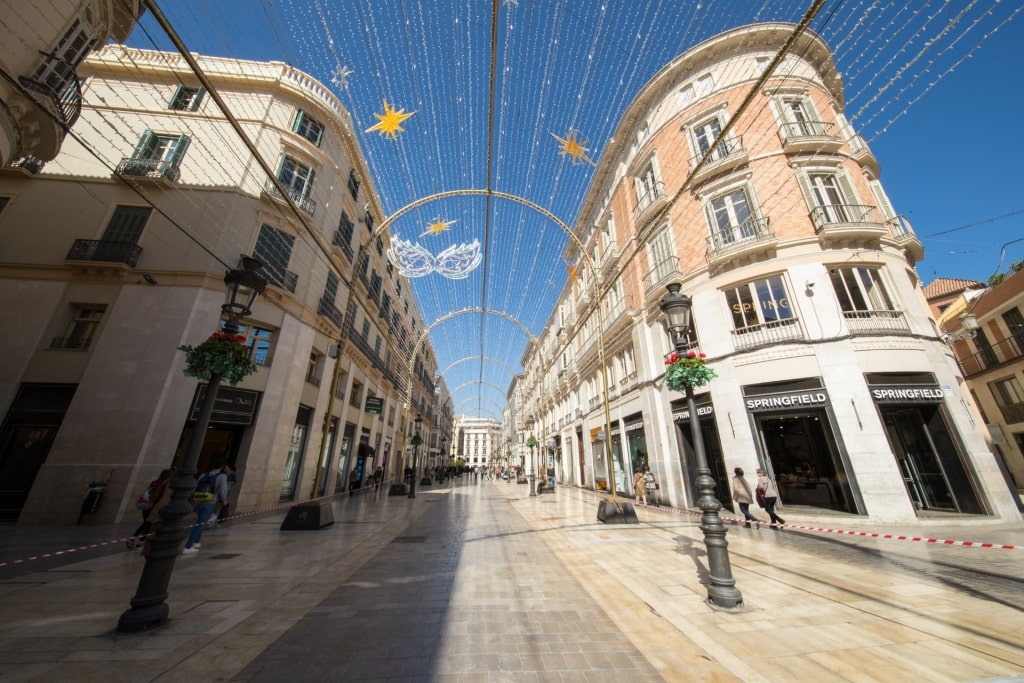
Malaga
Although on the surface Malaga appears to be a busy, modern port town, it’s actually steeped in history. One of the best cities in Spain, Malaga is overlooked by a Moorish castle dating back to the 11th century, built next to a Roman amphitheater that’s even older.
Modern Malaga is just as compelling. In recent years, the whole city has undergone an impressive rebirth, with new galleries and museums opening, the whole port area being redeveloped, and an edgy new art district, Soho, becoming fashionable.
This underrated European city is already giving showier rivals like Seville and Barcelona a run for their money.
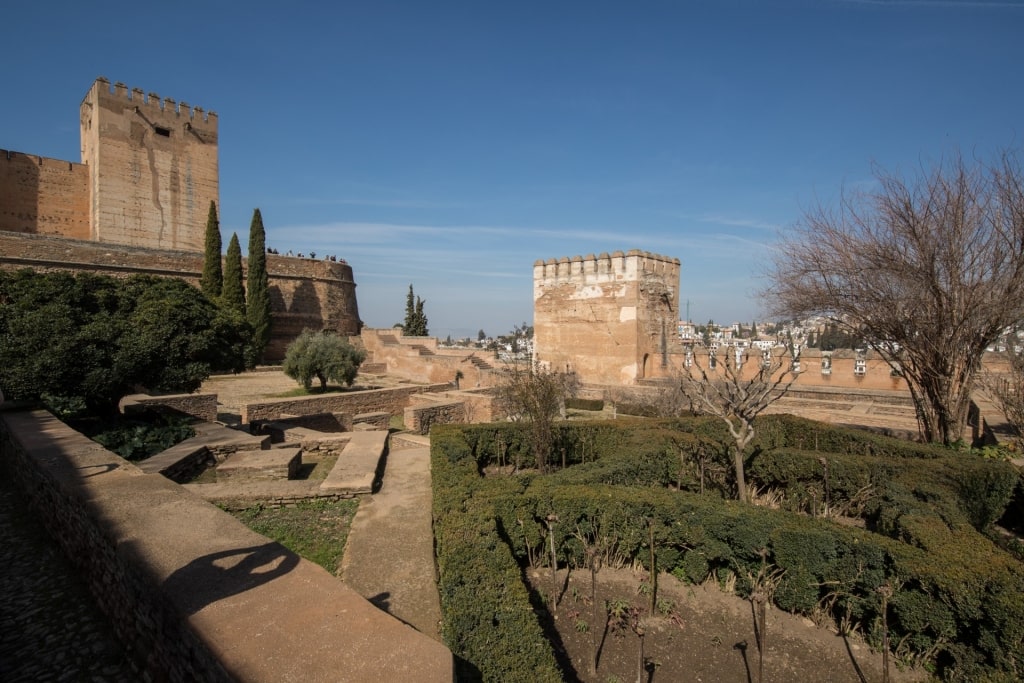
Alhambra Palace
You may use Malaga as a base from which to visit the more famous sites in the vicinity, from the pueblos blancos, or “white towns” of Mijas and Ronda, in the hills behind the coast, or the serenely beautiful Alhambra’s Palace outside Granada.
But make time to explore this fascinating port. Stroll along the beach, take in a gallery or two, and sample the tapas that Spain is known for. You’ll feel as though you’ve uncovered a slice of authentic Spain—and there’s way more than enough to fill a day here.
History & Culture
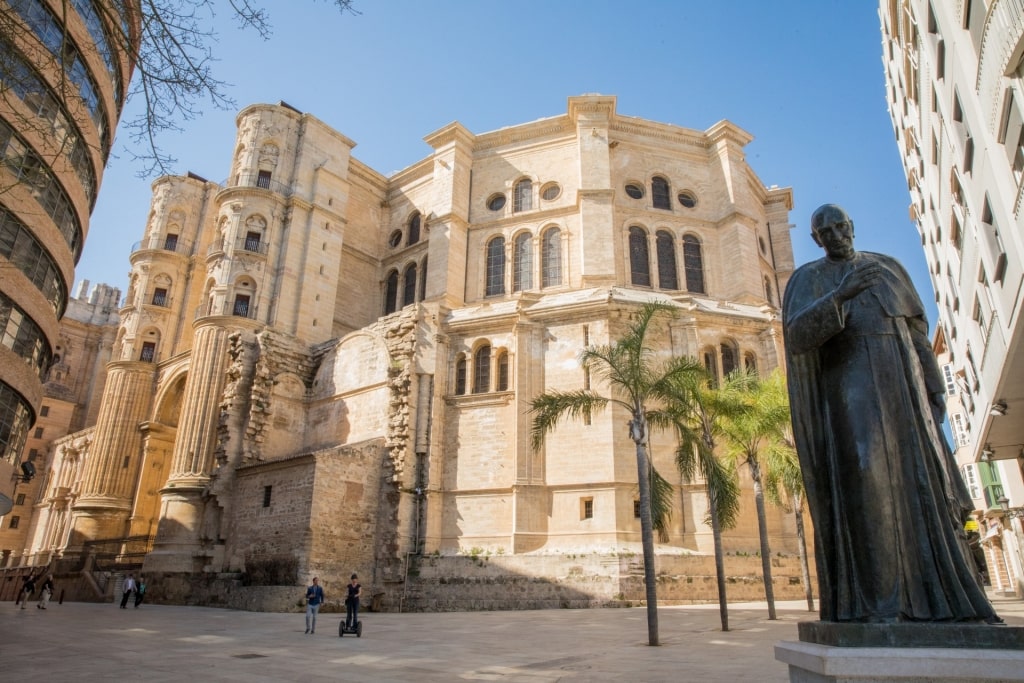
Malaga Cathedral
Malaga was founded by the Phoenicians around 1000 BC, making it one of the oldest cities in Europe. Its early name, Malaka, is believed to come from “Malac”, which means “salt” and refers to the fish salting industry that was important here at the time.
Waves of other settlers included Greeks and Carthaginians, who were driven out by the Romans around 218 BC. It was the Romans who really developed Malaga into a thriving port.
Possibly the biggest cultural influence on the whole of Andalucia (the autonomous region of Spain in which Malaga lies) came from the Moors, Muslim invaders from North Africa who settled here in 711 AD and stayed until 1487.
You’ll find Moorish influence everywhere in Malaga and Andalucia, from place names to castles, palaces and ancient watchtowers.
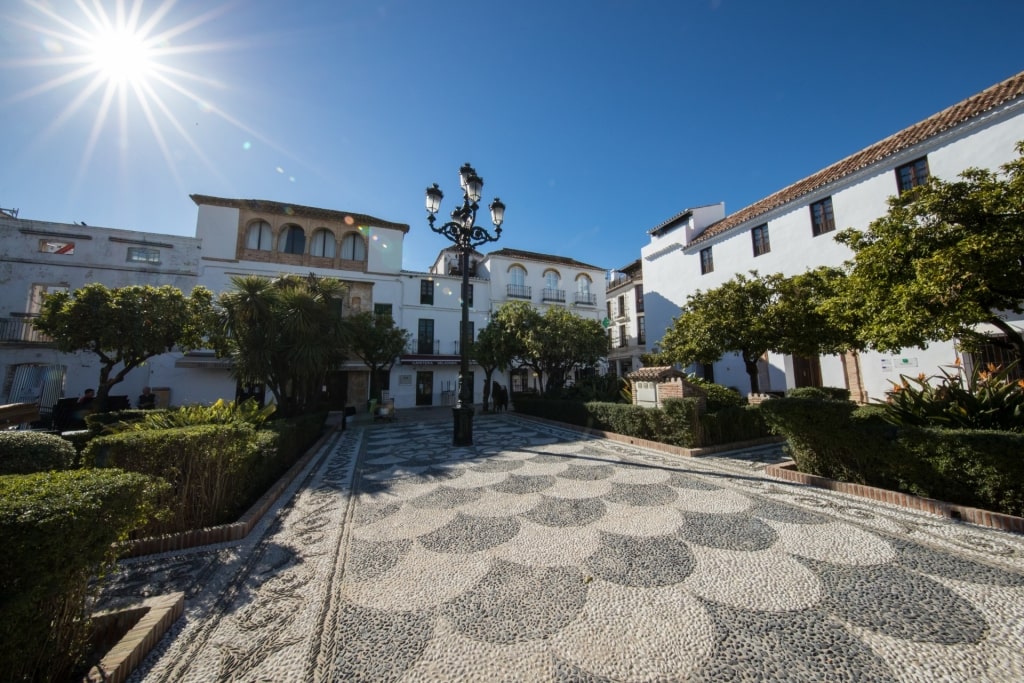
Marbella
After a couple of centuries in the doldrums following the reconquest of southern Spain by the Christians, Malaga once again became an important port in the 19th century.
It rose to fame in the mid-20th century as the gateway to the resorts of the Costa del Sol—glamorous celebrity hangouts including Sotogrande and Marbella, one of the best beach towns in Spain.
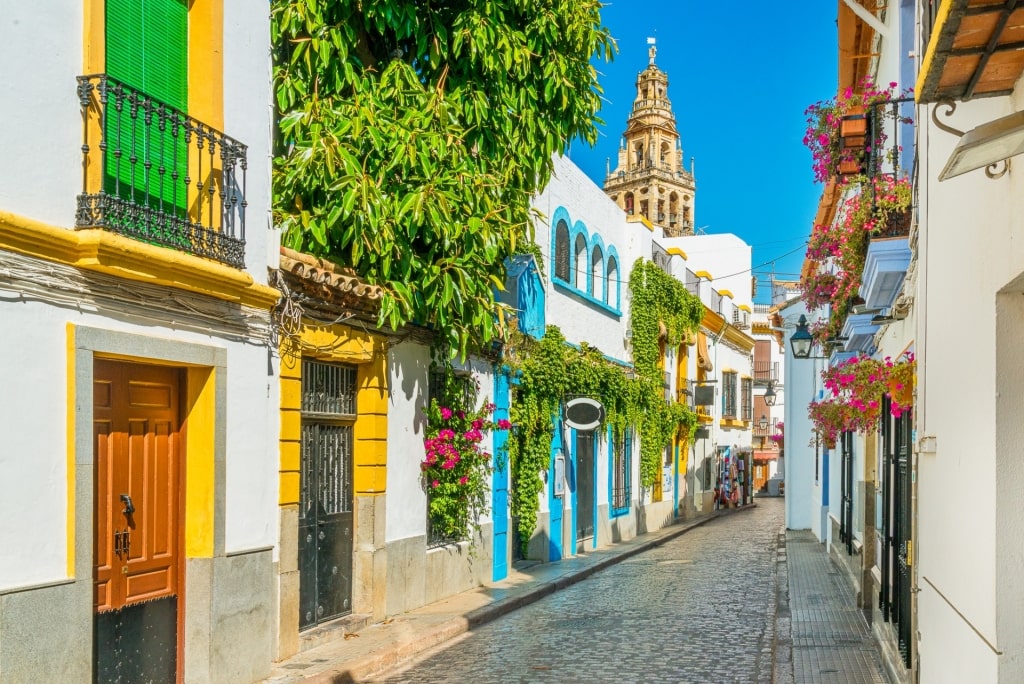
Cordoba
With almost year-round sunshine, a long string of Southern Spain’s beaches, some of the world’s finest golf courses, and the cultural attractions of Seville, Granada, Ronda, and Cordoba within easy reach, the region is now firmly established as one of Europe’s premier vacation spots.
Andalucia, and by default, Malaga, has a culture all of its own. It’s here in the south that flamenco took hold in Spain some time between the 9th and the 14th centuries, although this passionate dance is ubiquitous now.
Malaga and the towns around it also have an enduring tradition of equestrian culture. Attend a festival, of which there are many, and you’ll see the locals dressed in their finery, mounted on beautiful white Andalucian horses, bred from Arab strains.
Wildlife & Nature
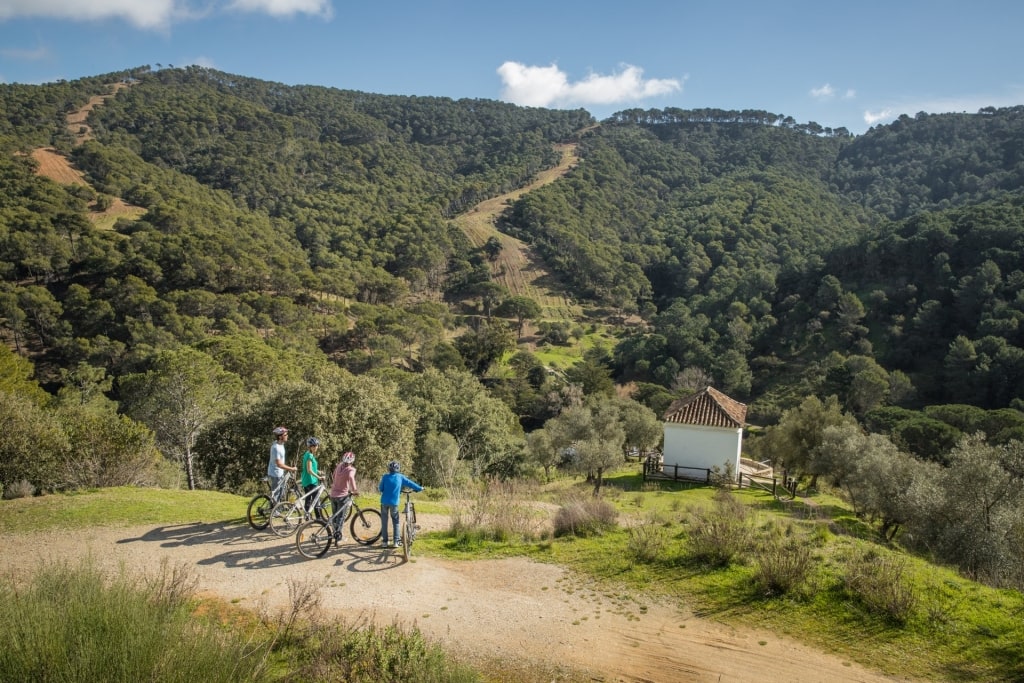
Montes de Malaga Natural Park
The suburbs of Malaga quickly give way to wooded hills and mountains, with some wonderful Spain hiking opportunities. In the Montes de Malaga Natural Park, north of the city, you could see wild boar, badgers, and foxes, as well as eagles, buzzards and goshawks.
Graceful Spanish ibex, a wild goat with long, curved horns, may make an appearance around the woodlands and cliffs on either side of the city. And if you’re out on the water, keep a lookout for dolphins, which often cruise in pods close to the shore.
Tips for Visiting Malaga
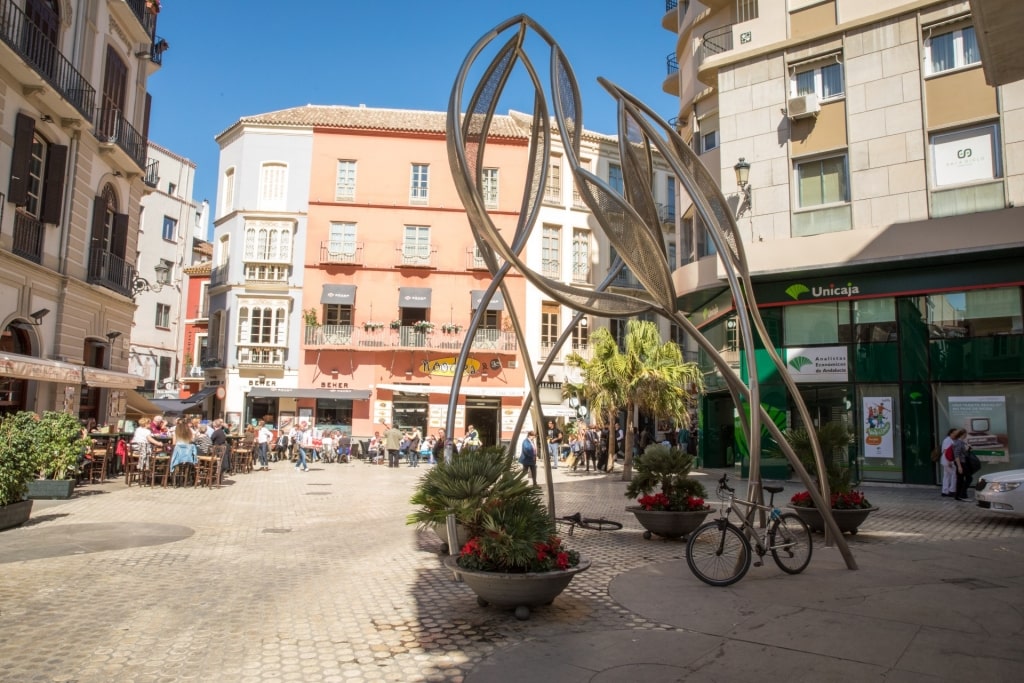
Malaga
If you’re planning to spend a day in this beautiful Spanish city, you can walk pretty well everywhere; a lot of sights, including the Picasso Museum and the Alcazaba (the castle) are located around the Centro Histórico.
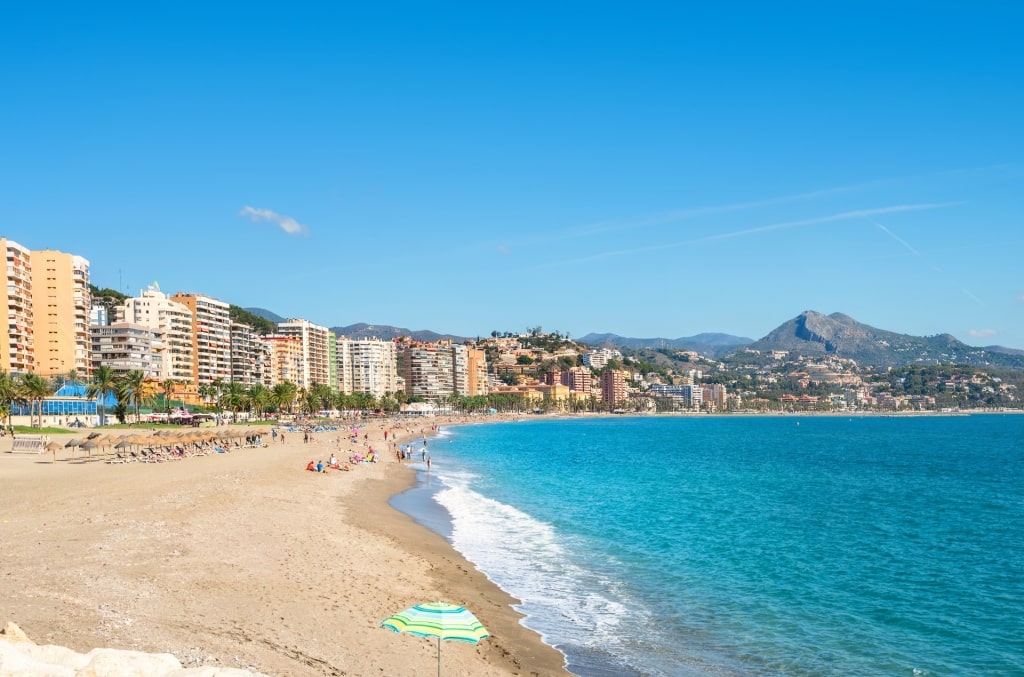
Playa de la Malagueta
The beach may beckon, in which case the long, sandy strip of Playa de la Malagueta is right in front of the port area, stretching away to the east and lined with chiringuitos, seasonal beach bars and fish restaurants.
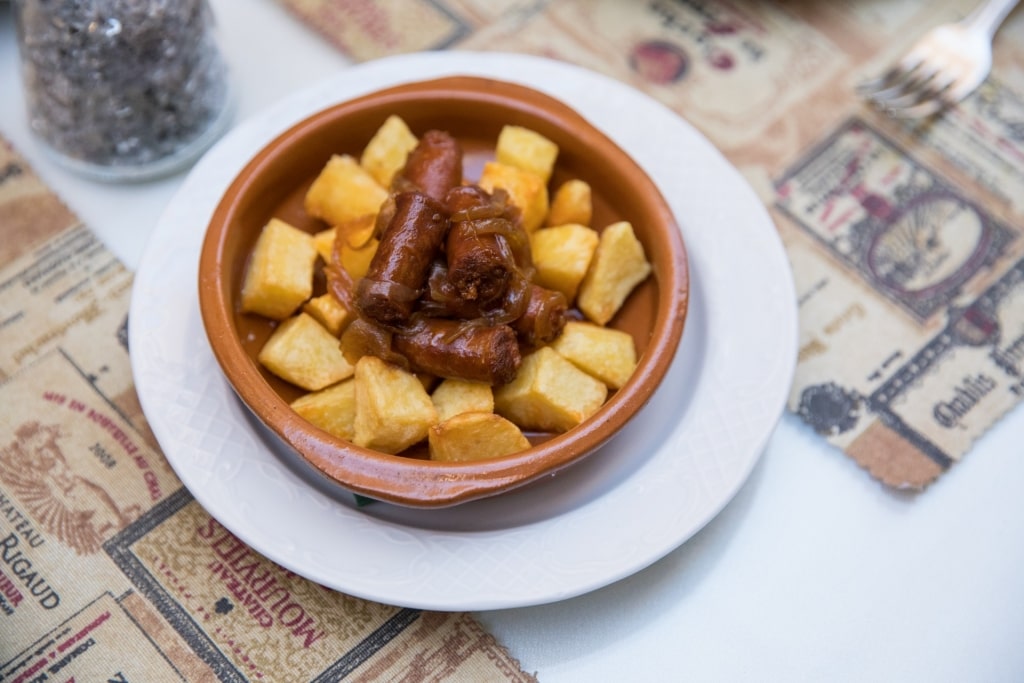
Tapas
Pace yourself, though; the heat in the middle of summer can be intense. Do as the locals do; take it slowly, make time for a long lunch in the shade somewhere, and possibly a siesta. Then head out again early in the evening in “golden hour” for tapas and a chilled glass of sherry.
Things to Do & Attractions in Malaga
Explore a Moorish Castle
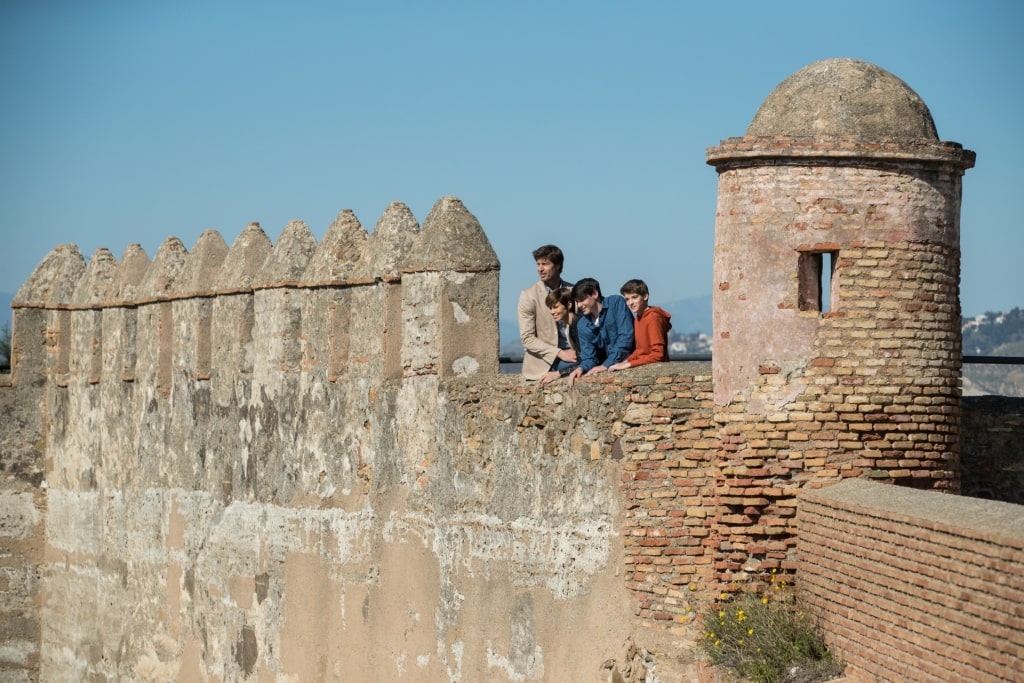
Gibralfaro Castle
Gibralfaro Castle, its ramparts snaking up a wooded hill to the east of the city center, was built by the Moors in the eighth century and added to in the 14th century.
Its role was to serve as a lighthouse (hence the name, which comes from the Arabic Jabal-Faruk, the “mountain of light”) and to protect the port below and the Alcazaba Palace at the foot of the hill.
At the time, this Spanish landmark was considered the most impregnable fortress on the coast, with double-thickness walls and eight watchtowers. You can walk around the perimeter today, with sweeping views down over the city and beaches and to the east, towards the craggy Sierra Nevada.
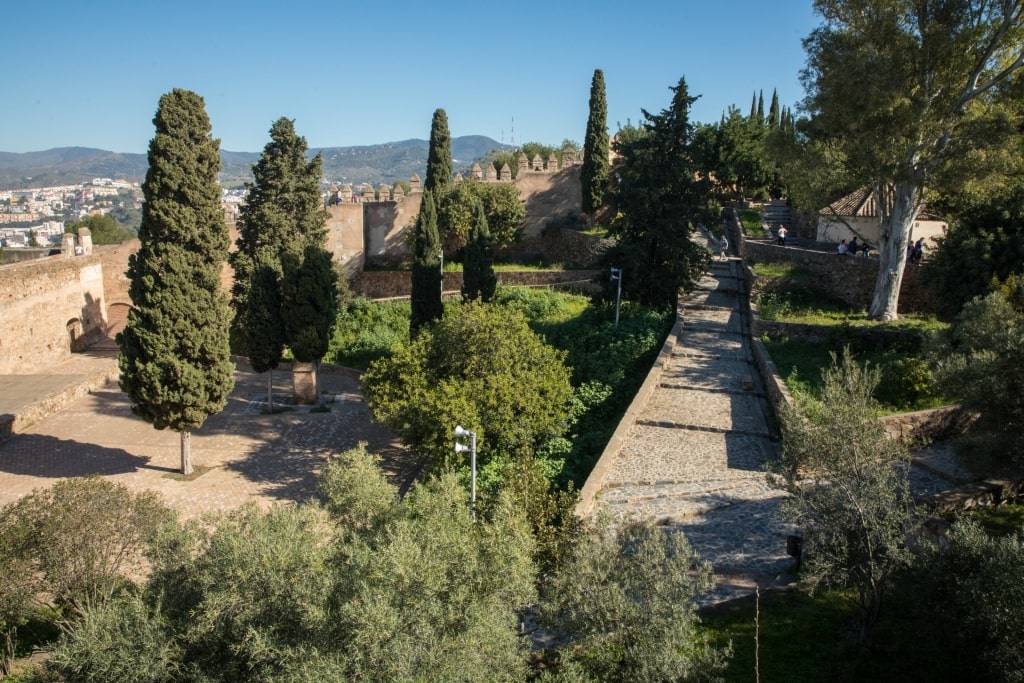
Gibralfaro Castle
Visit the upper and lower courtyards and the military museum to learn about the history of the site, which has been used as a defensive lookout even before the Moors arrived; there’s a well here, for example, that was dug by the Phonecians.
If it’s not too hot, walk up the hill on the marked trail, which leads through lush gardens of bougainvillea and citrus trees with regular lookout points from which to take in the views of the city below.
Read: Breathtaking Castles in Spain
Peek Into a Palace
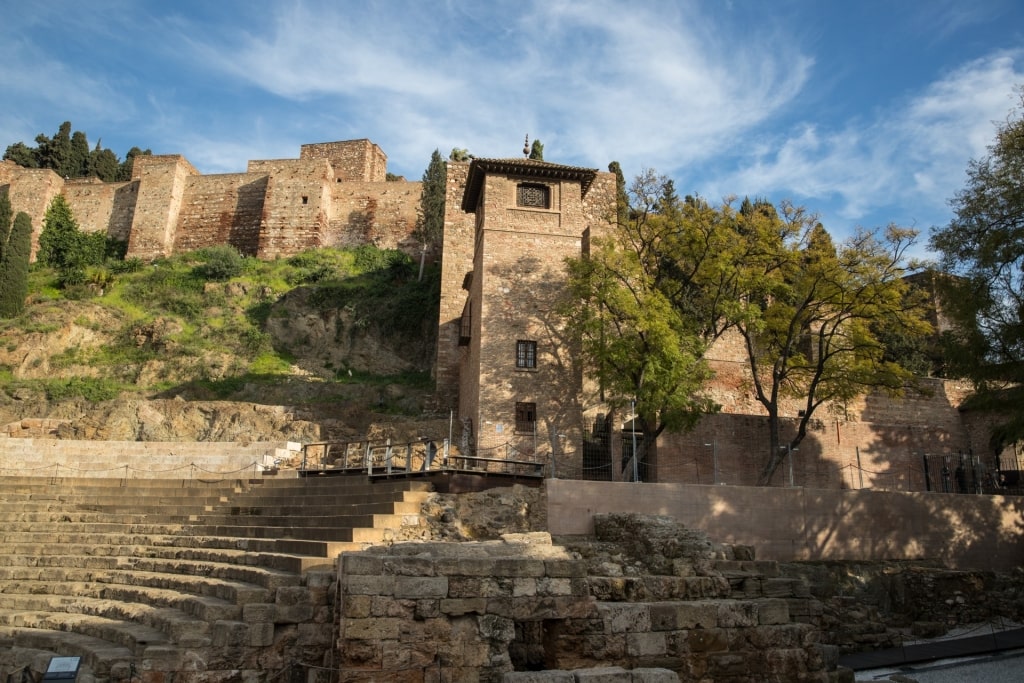
Alcazaba Palace
In the 11th century, the Moors built a chunky palace, the Alcazaba, which means “citadel”, at the foot of Gibralfaro Hill, plundering parts of the adjacent Roman Amphitheater during the construction.
The palace has been much restored over time and is regarded as a fine example of the Moorish architecture that’s a legacy of Andalucia.
The Alcazaba, complete with turrets and slits for firing arrows, is typical of Moorish style. You’ll see decorative arches and rooms clustered around shaded patios and splashing fountains, over which the sea breeze would waft cool air centuries before the era of air conditioning.
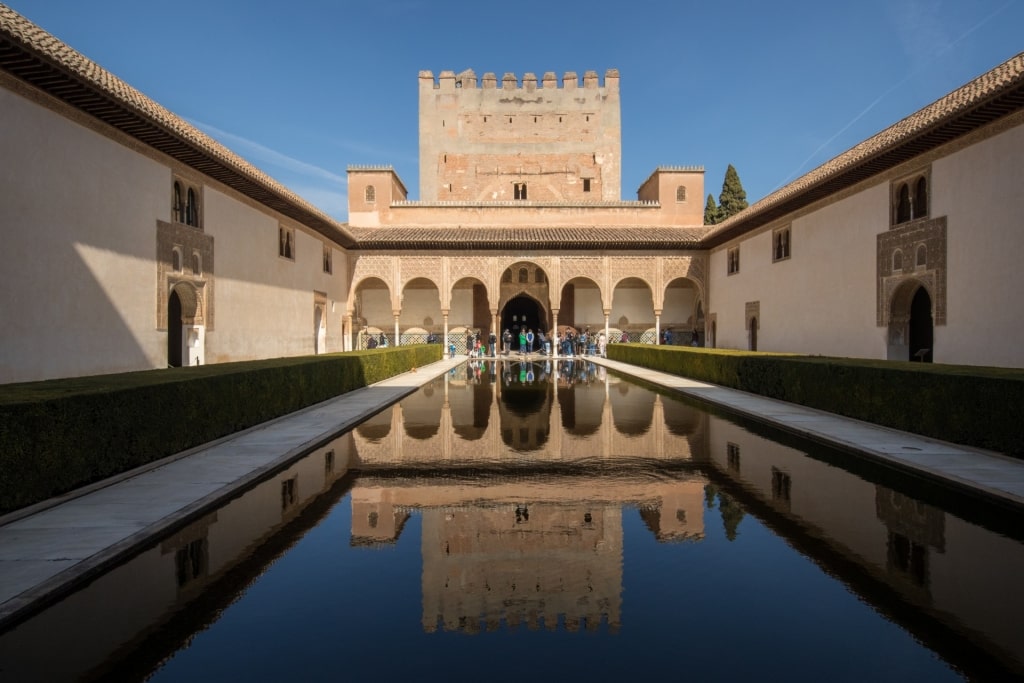
Patio de la Alberca, Alhambra Palace
The palace is evocative of the magnificent Alhambra outside Granada, although much smaller. The Patio de la Alberca is especially lovely, with greenery overlooking a shimmering pool at its center.
Combine your visit to the Alcazaba with a wander around the Roman Amphitheater and a stroll up Gibralfaro Hill to the castle; the three should occupy half a day.
Visit Picasso’s Birthplace and Museum
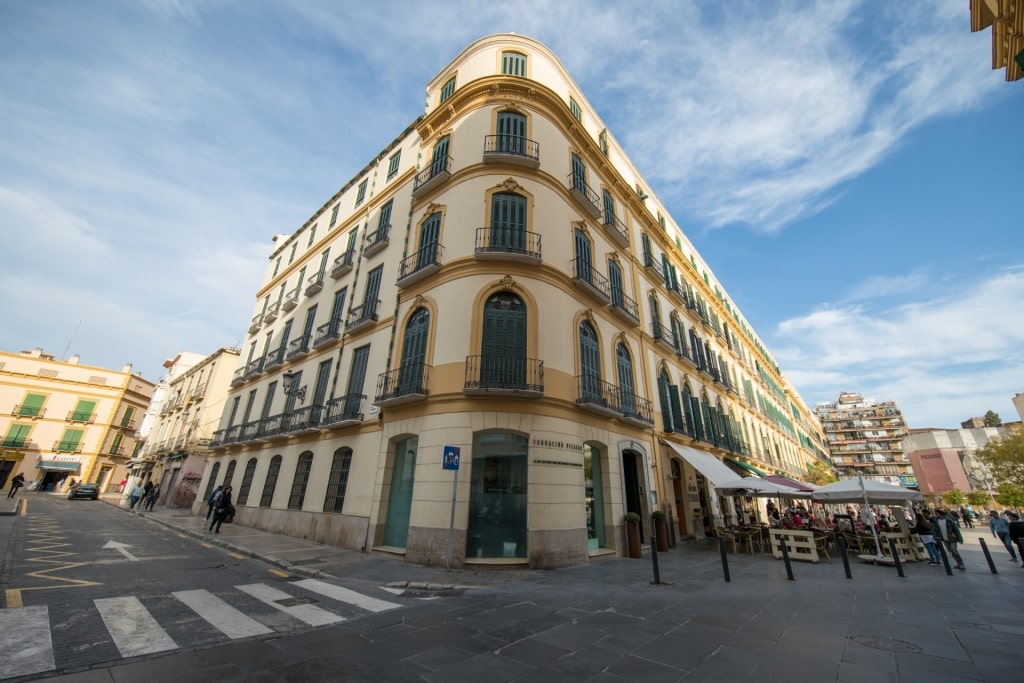
Plaza de la Merced
Possibly Malaga’s most famous son, Pablo Picasso was born here in 1881 at Number 15, Plaza de la Merced. Although he only lived here until 1884, his birthplace has been preserved by his family as a small museum, the Casa Natal Picasso, in the old city center.
Inside, you can see family mementos, prints, ceramics, and graphic art, as well as some of the work of Picasso’s father, Jose Ruiz Blasco, who was also an artist.
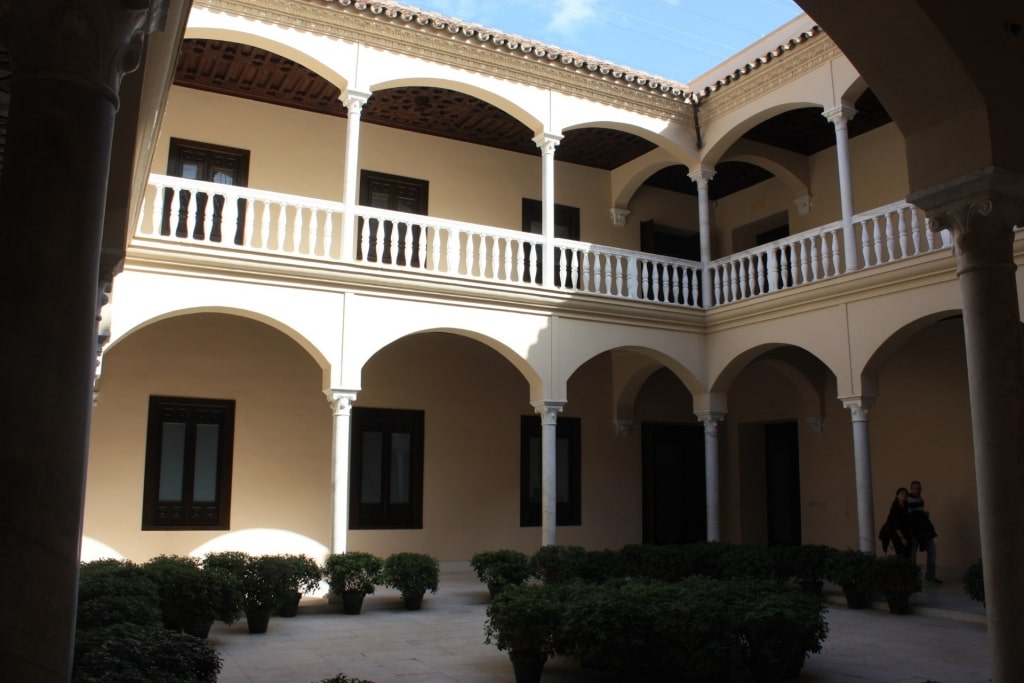
Museo Picasso Malaga Photo by Dguendel on Wikimedia Commons, licensed under CC BY 3.0
The main event, though, is a few steps away in the 16th century Buenavista Palace, where the grand Museo Picasso Malaga was inaugurated in 2003. Here, you’ll see more than 200 works that have either been loaned or donated by the Picasso family.
The paintings, sketches, ceramics, and sculptures are spread across 12 exhibition halls and include some of the artist’s most famous works, among them Mother and Child and Portrait of Paulo with White Hat.
After your visit, shop for Picasso books and prints in the shop, and stop for coffee on the museum’s pretty terrace.
Climb to the Roof of Malaga Cathedral
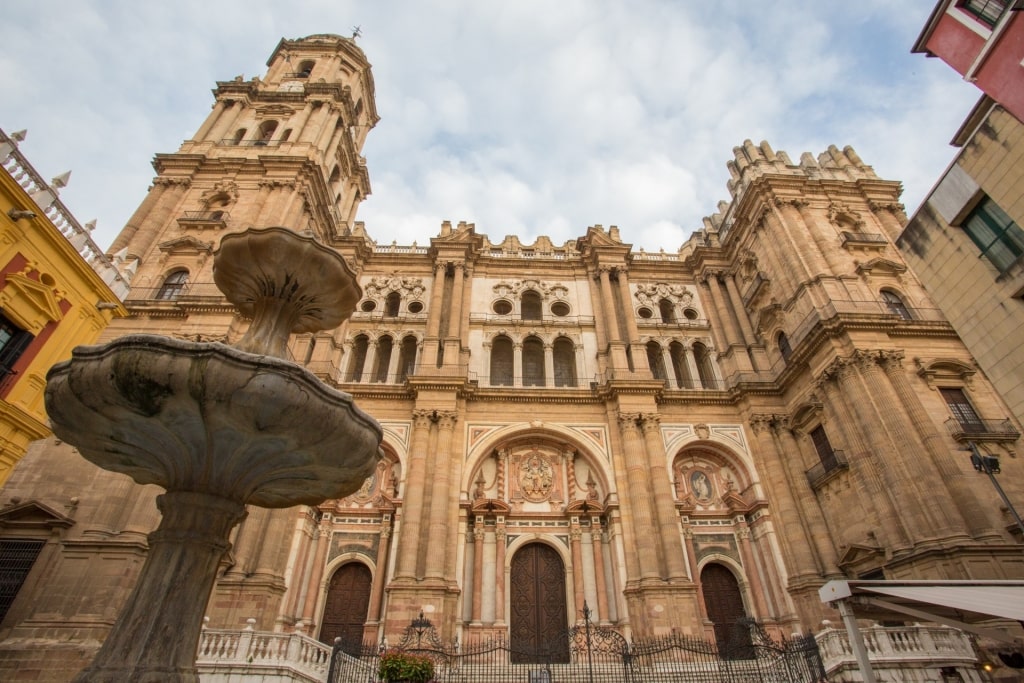
Malaga Cathedral
Like many places of worship in southern Spain, Malaga Cathedral was built on the site of a former mosque after the Moors had been driven out of Andalucia.
Work on the building began in the 16th century but carried on so long that construction was abandoned in 1782. As such, there’s only one bell tower, which has earned the cathedral the name “La Manquita”, or “the one-armed woman”.
The interior of this beautiful Spanish church, nonetheless, is awe-inspiring, in Renaissance and Baroque style, with slender columns supporting a ceiling some 130 feet high, and elaborately carved choir stalls of mahogany and cedar.
Take the guided tour up to the roof if you’ve got a head for heights; you’ll have to climb 200 steps, but the views over the city’s rooftops are spectacular.
Stroll Through a “White Town”
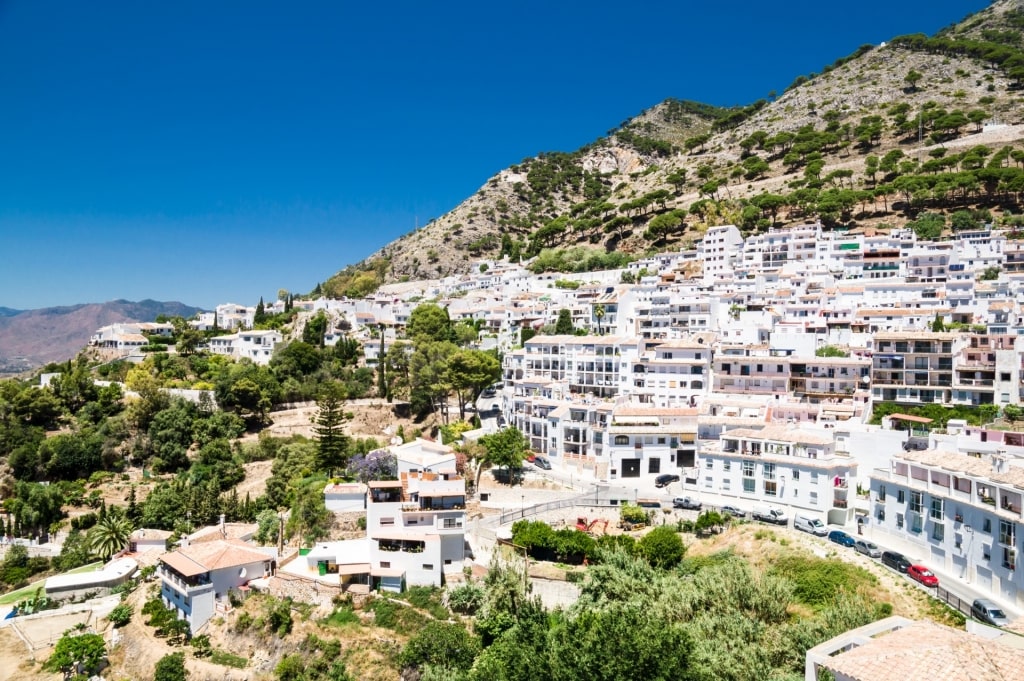
Mijas
The pueblos blancos, or white towns, are scattered over the wooded hills outside Malaga like sugar cubes.
These hill villages represent the frontier of the centuries-long battles for Andalucia between the Christians and the Moors; some, further west, including Jerez and Arcos, even have “de la Frontera” as a suffix to their name.
Mijas is one of the closest white towns to Malaga, just 35 minutes’ drive along the coast to the west and up into the hills. Late afternoon is a good time to visit, when the midday heat has subsided.
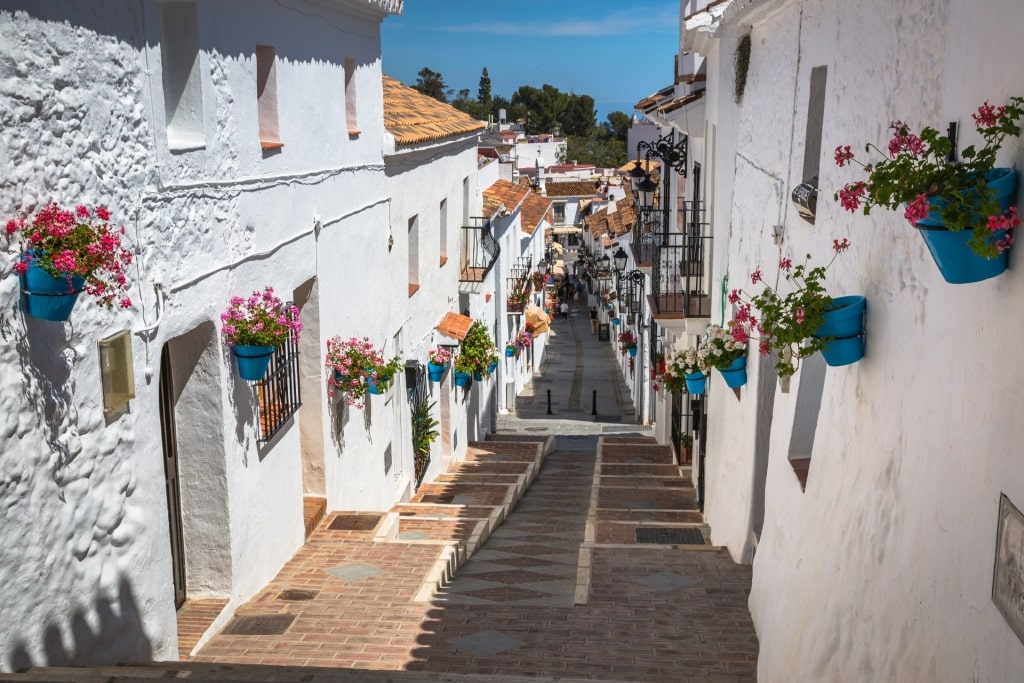
Mijas
Although something of a magnet for day-trippers from the coast, the village is exceptionally pretty. Immaculate whitewashed houses feature terracotta roofs and sky-blue pots overflow with geraniums.
Stroll the cobbled streets of one of the most beautiful places in Spain, and pop into the Church of the Immaculate Conception to admire 17th-century frescoes.

Shrine of the Virgen de la Peña, Mijas
Head up to the Shrine of the Virgen de la Peña, dedicated to the patron saint of the town. From here, the Mediterranean is a misty blue in the distance. Stop for tapas in one of the many bars before heading back to Malaga.
Gaze at Contemporary Art in the Centre Pompidou Malaga
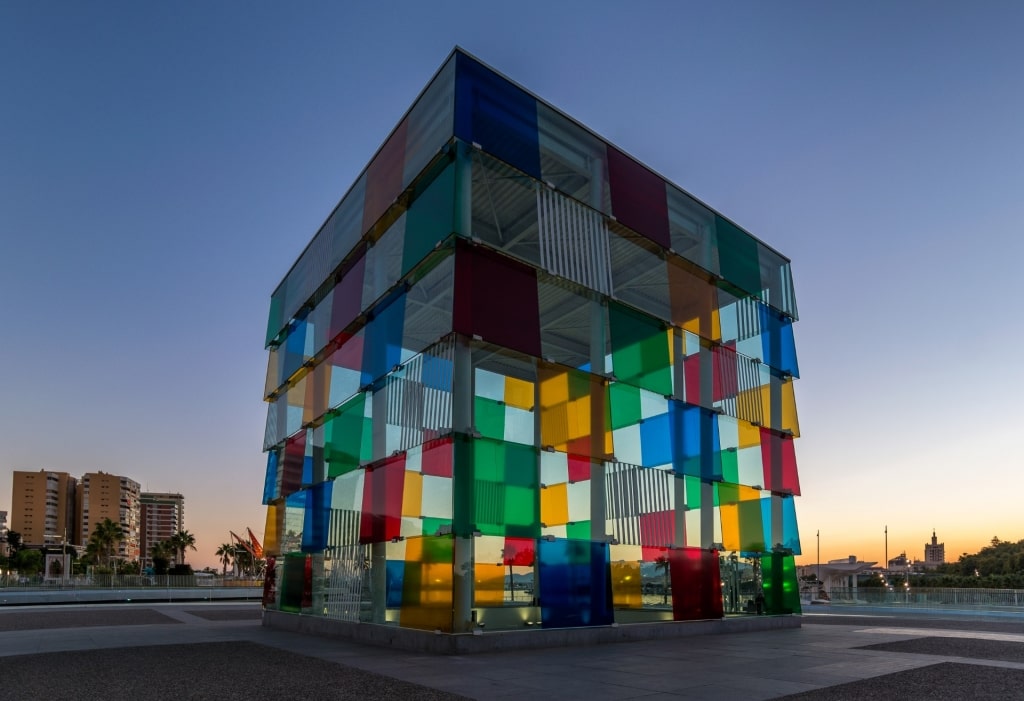
Centre Pompidou Malaga
The shining star of Malaga’s redeveloped port area is the Centre Pompidou, the first of its kind outside Paris. You can’t miss it; the low-lying contemporary gallery is topped by a colorful glass cube. The red, yellow, green, and blue panels filter sunlight onto the surrounding gardens.
Inside the main building, there’s an impressive collection of contemporary art including works by Frida Kahlo, Francis Bacon, Marc Chagall, Joan Miro, and René Magritte, as well as temporary exhibitions.
Browse the Mercado de Atarazanas
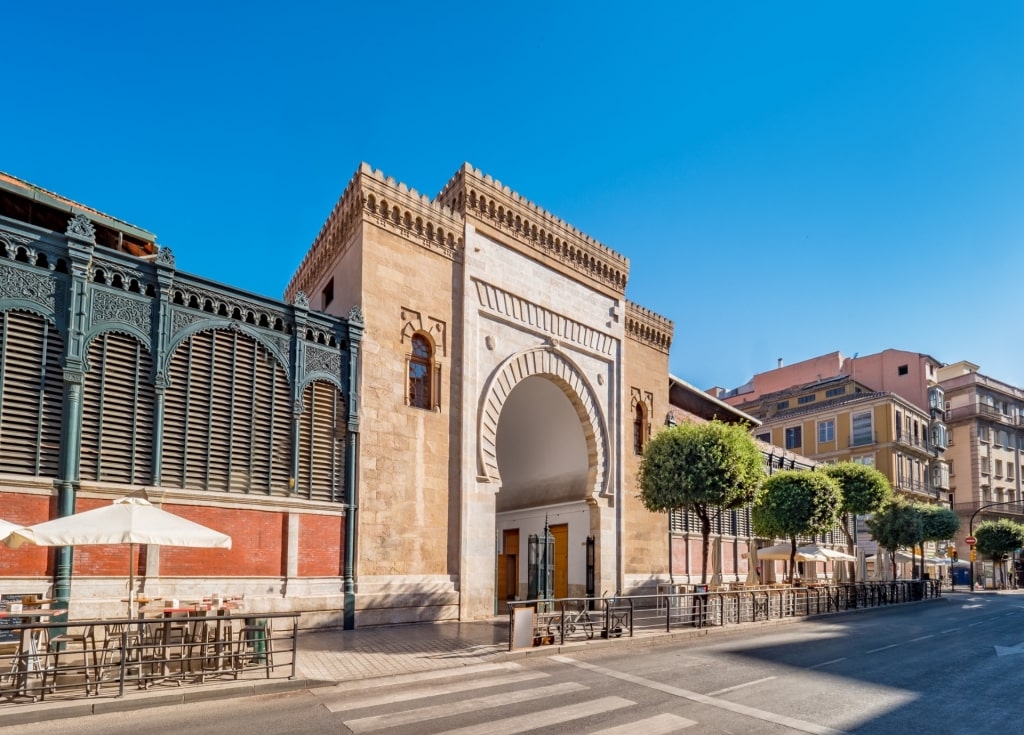
Mercado de Atarazanas
Malaga’s main produce market is housed in a palatial, iron-clad building that has served over time as a Moorish shipyard, and later, an arsenal and military hospital.
After extensive renovation, some of the original features have been preserved, not least the monumental gate of the original shipyard. A vast stained-glass window depicts scenes from Malaga’s history.
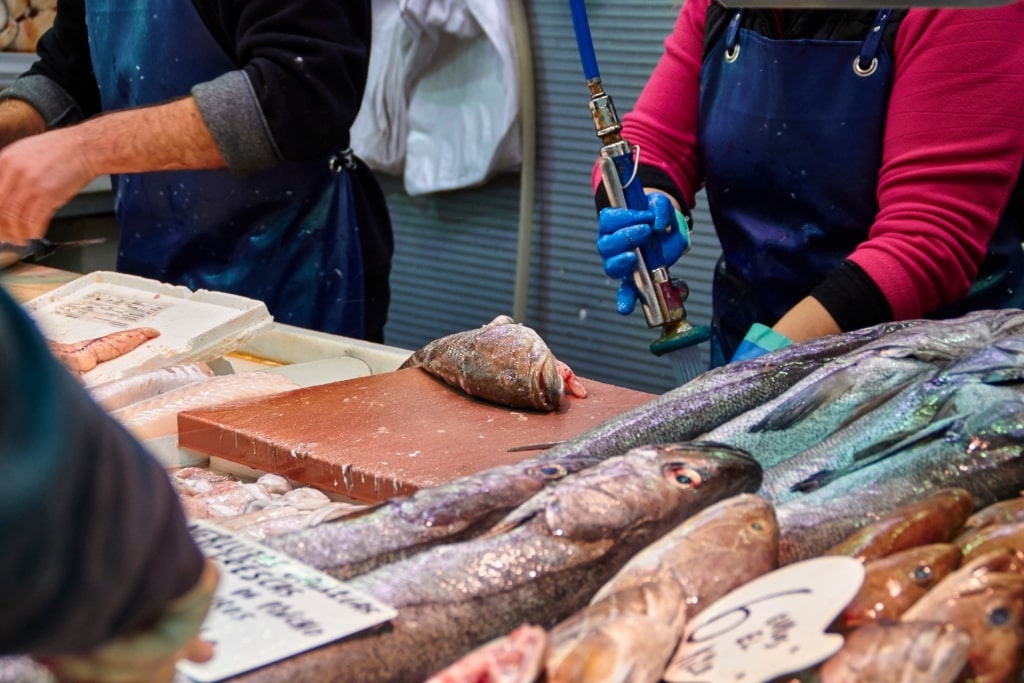
Mercado de Atarazanas
Inside, you’ll find all sorts of temptations, from artisanal cheeses to legs of ham, fresh fish, olives, wine, honey, and mountains of fresh fruit and vegetables. Browse the stalls and visit some of the pop-up tapas bars for snacks or morning coffee.
Food & Drink
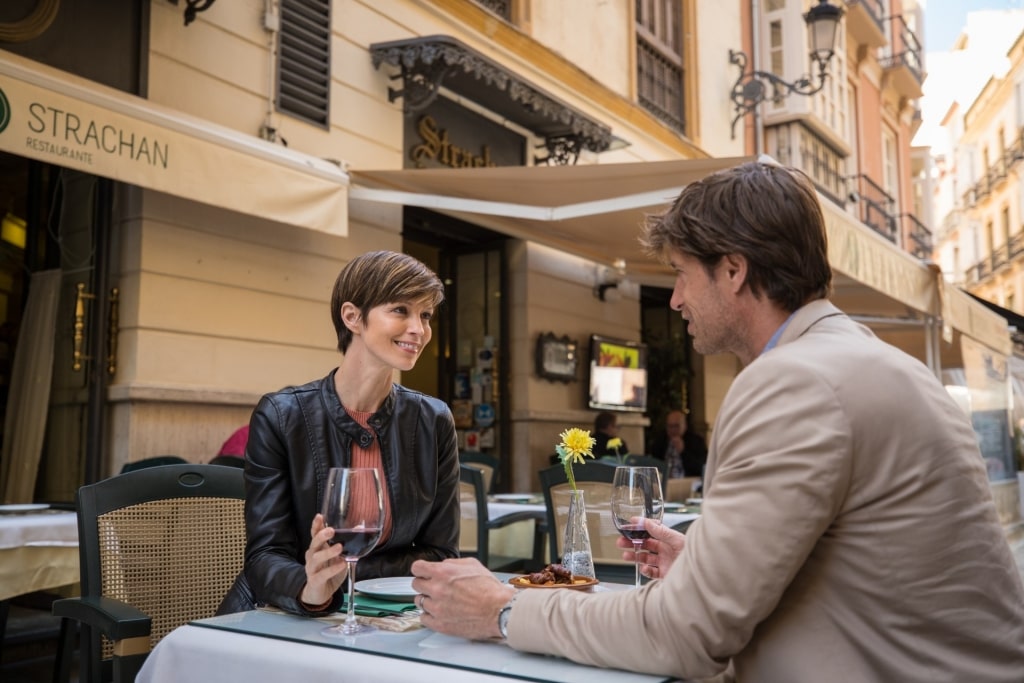
Tapas tasting in Malaga
Malaga has a superb culinary scene, from hole-in-the-wall tapas bars to Michelin-starred fine dining restaurants. You could get through the whole day simply by grazing, especially if you start with churros—fried strips of donut—dipped in thick chocolate sauce.
The fancy tapas bar El Pimpi has a spot of celebrity endorsement, as Hollywood star Antonio Banderas, a local, is an investor. Try the Iberian air-dried hams—pata negra is the finest—and for vegetarians, the fried eggplant dipped in honey.
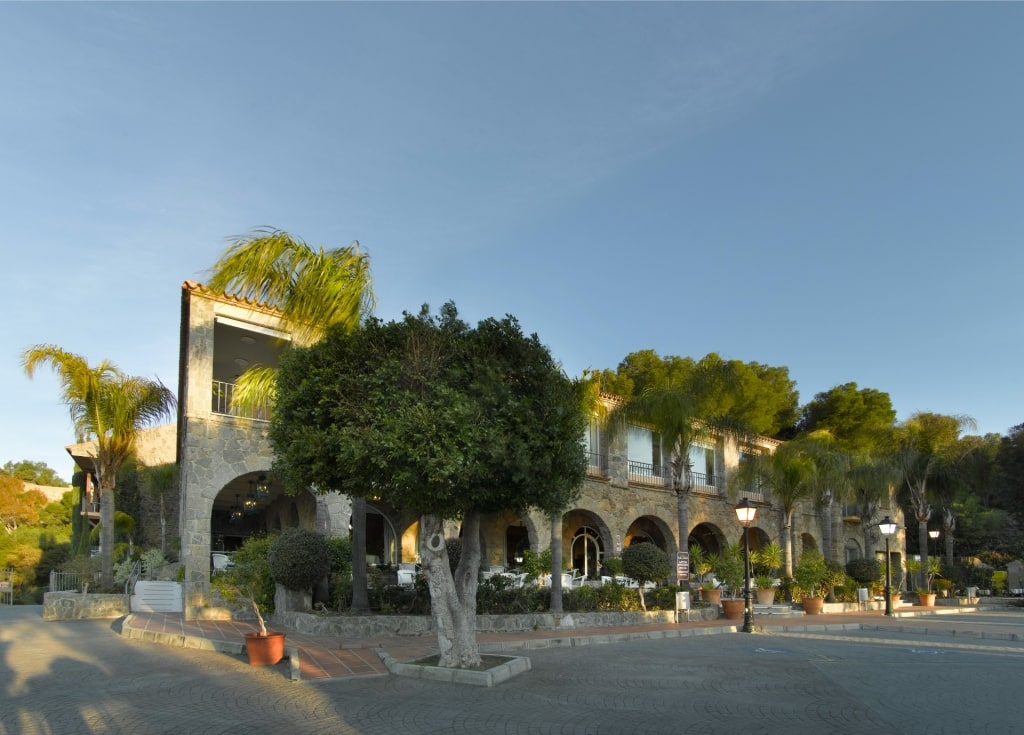
Parador Gibralfaro Photo by Paradores on Wikimedia Commons, licensed under CC BY-SA 4.0
Many restaurants in the city come with a view of the sea and the mountains, and there’s no shortage of rooftop terraces here. One of the loveliest restaurants with a view is at the Parador Gibralfaro, on a pine-covered hilltop opposite the Alcazaba castle. Fried fish is the specialty here.
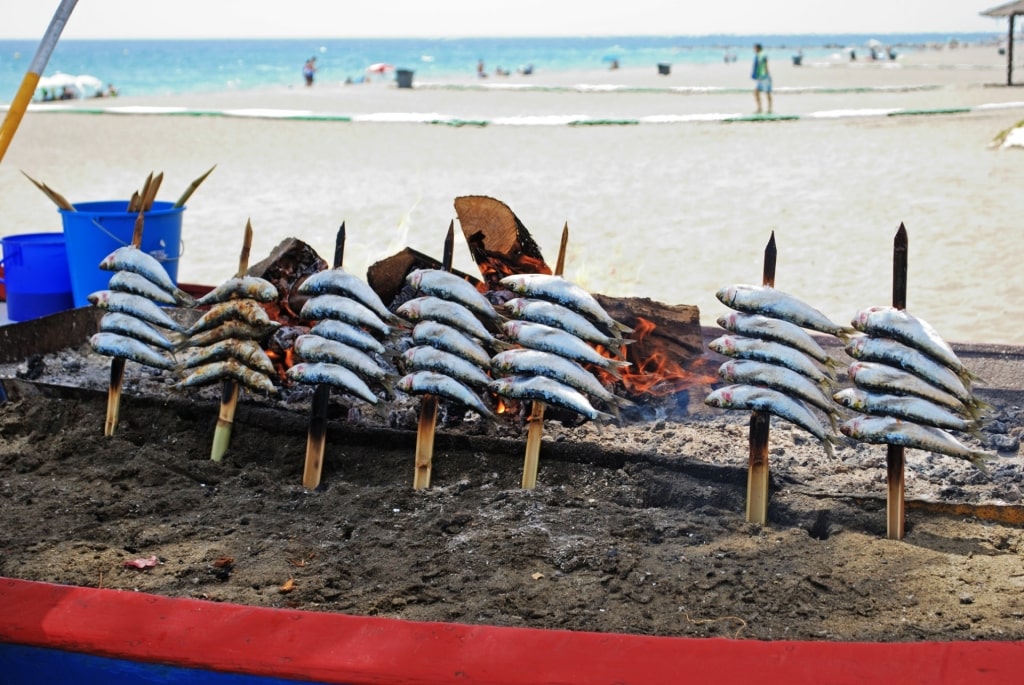
Sardines
Speaking of fish, the beaches around Malaga are where you’ll still find an age-old tradition. Locals thread sardines onto a wooden skewer and cook them over a fire in a little pit in the sand. If you see anybody offering these, try one; they’re delicious.
Or stroll east along the coast to Pedregalejo, an old fishing village, where the restaurant El Cabra, right on the beach, offers sardines, sea bream, sea bass and shrimps grilled this way, fresh from its own boat.
Best Time to Visit Malaga
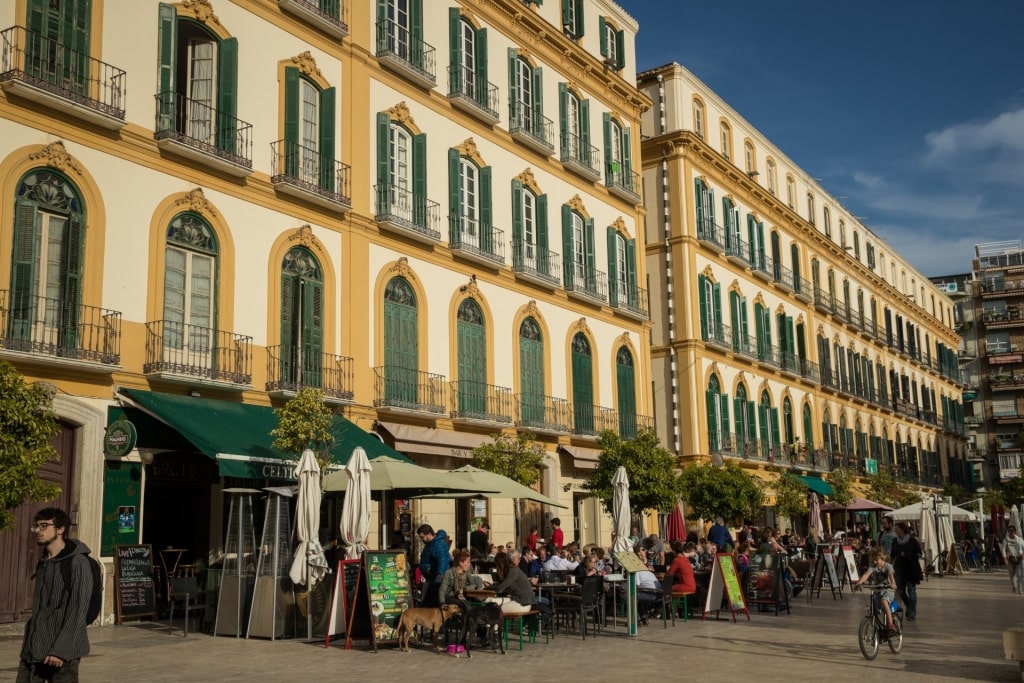
Plaza de la Merced
The Costa del Sol’s claim to fame is that the sun shines 300 days a year, so visiting any time between April and November should bring clear skies and warm weather.
Mid-summer can get very hot but is still a good time to come for beach life and balmy evenings in alfresco tapas bars.
During spring and late fall in Spain, you may see a dusting of snow on the mountains of the Sierra Nevada, especially if you venture inland to Granada, but it’s usually clear on the coast.
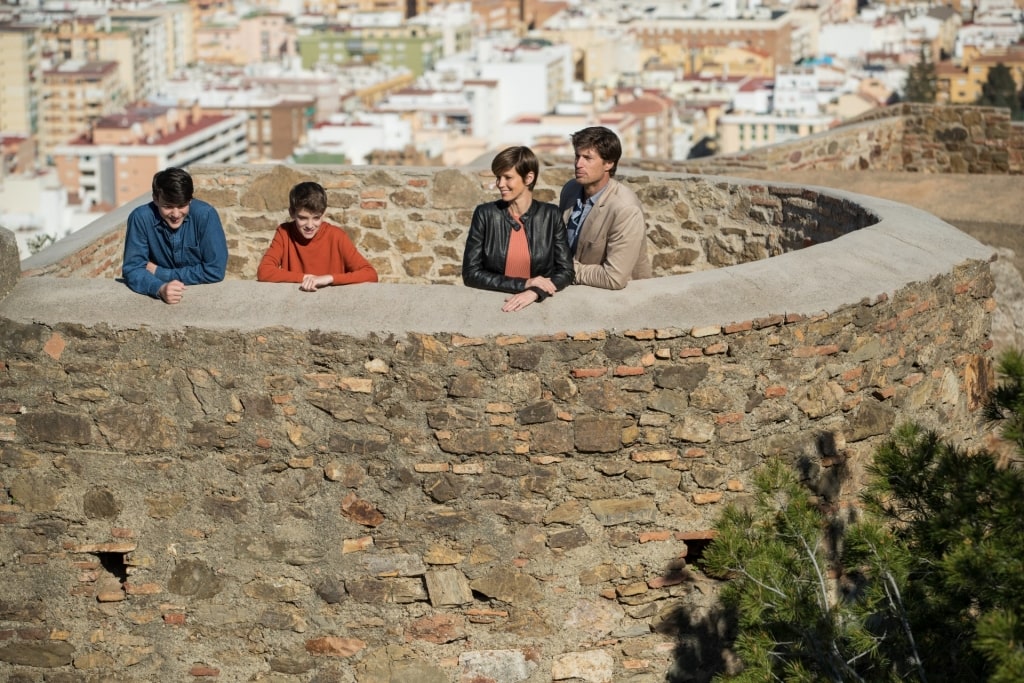
Gibralfaro Castle
Discover the cultural and culinary joys of Malaga, Spain for yourself. Browse our cruises to Malaga and plan your European adventure.



